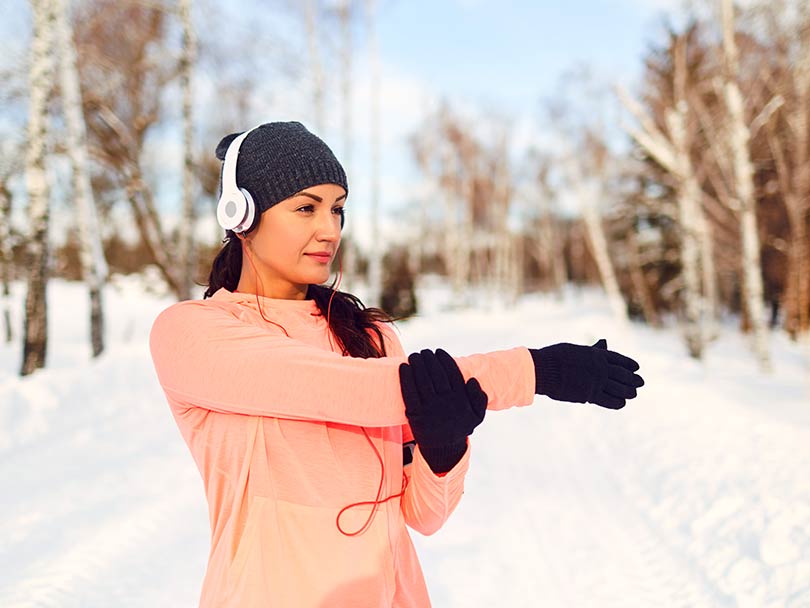According to the U.S. Consumer Product Safety Commission, more than 76,000 skiing and 53,000 snowboarding injuries get treated in medical centers each year, from knee and shoulder injuries to lower leg fractures and head injuries. Tactics to help avoid them include using appropriate equipment, staying within your ability level, taking lessons and even learning to fall correctly.
“Injury prevention is one of my favorite parts of medicine,” said Dr. Beim, adding she’s seen and treated her fair share of winter injuries after 25 years of living in Crested Butte. “From stretching and strengthening muscle groups to wearing protective gear and using the right equipment, there are many ways to increase your fun and lengthen your season without injury. It’s way more fun for me to see my patients on the mountain skiing than in the clinic.”
Following are a few injury prevention pointers recommended by Dr. Beim and the American Academy of Orthopaedic Surgeons:
Maintain fitness: Be sure you’re in good physical condition before heading out. If you’re out of shape, select your runs carefully and gradually build up to more challenging trails. Many injuries happen at the end of the day when you’re tired; these can be prevented by being in good shape beforehand and stopping when you’re tired or in pain.
Warm up: Cold muscles are more prone to injury. Warm up with jumping jacks, running or walking in place for 3 to 5 minutes. Take a couple of slow runs first to complete your warmup.
Hydrate: Even mild levels of dehydration can affect physical ability and endurance. Drink plenty of water before, during and after your outing.
Know safety rules: Understand and abide by all rules of the resort. Know general safety rules, such as how to safely stop, merge and yield to other skiers or riders, and know how to properly get on and off a lift.
Use appropriate equipment: Wear several layers of light, loose and water- and wind-resistant clothing for warmth and protection, and to accommodate your body’s changing temperature. Use boots and bindings that have been set, adjusted, maintained and tested by a shop that follows American Society of Testing and Materials standards. Ski bindings must also be properly adjusted to your height, weight and ability.Wear appropriate protective gear such as goggles and a ski- or snowboard-specific helmet.
Ski and ride safely: Stay on marked trails and avoid potential avalanche areas; watch out for rocks and ice on trails; pay attention to storm warnings and cold temperatures; and make adjustments for icy conditions, deep powder and wet snow.
Prepare for injuries: Ski with partners and stay within sight of each other (if you get ahead, stop and wait). Also use good judgment, particularly at day’s end when you may be fatigued (don’t attempt your most difficult run at the end of the day). Seek shelter and medical attention if anyone is experiencing hypothermia, frostbite or pain, and make sure everyone is aware of proper procedures for getting help if injuries occur.

